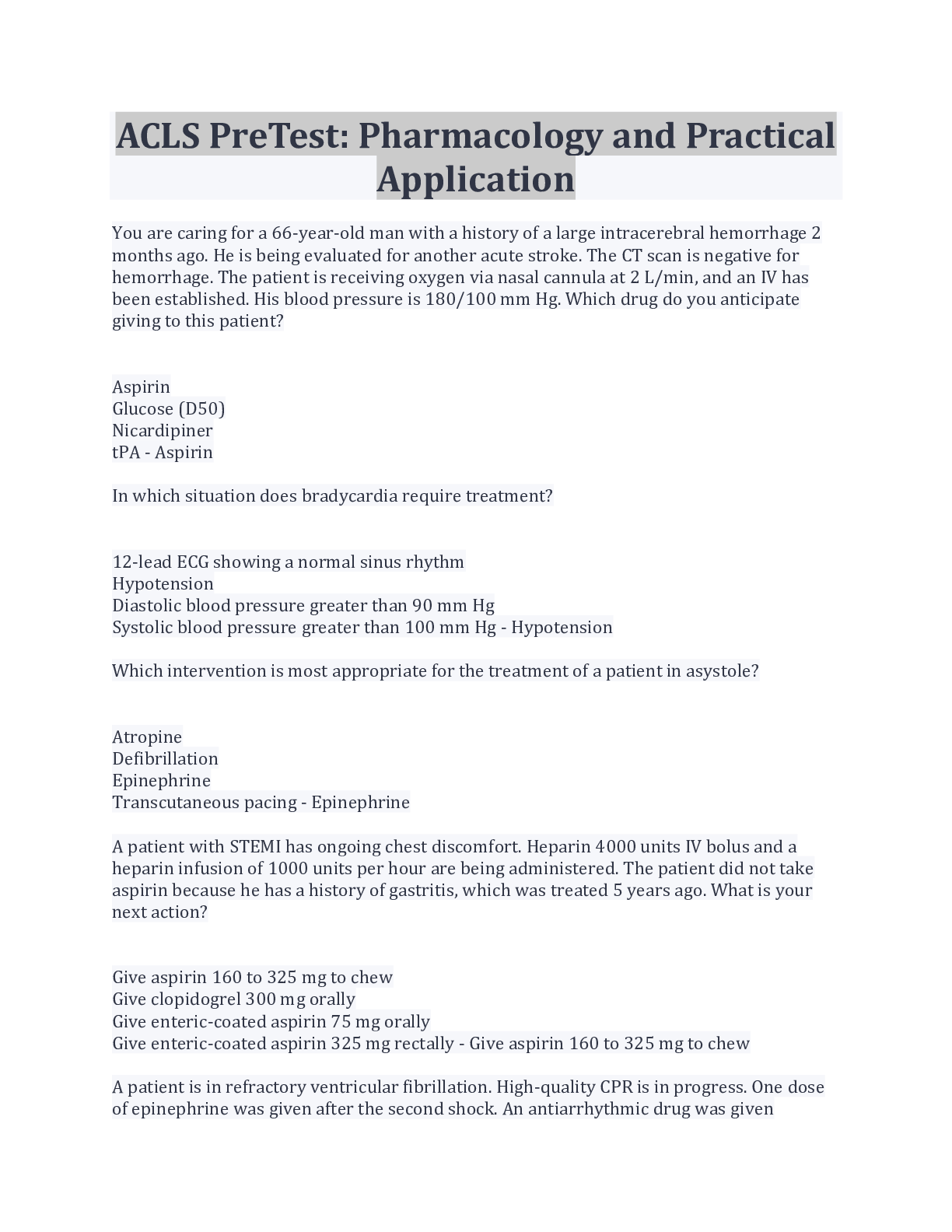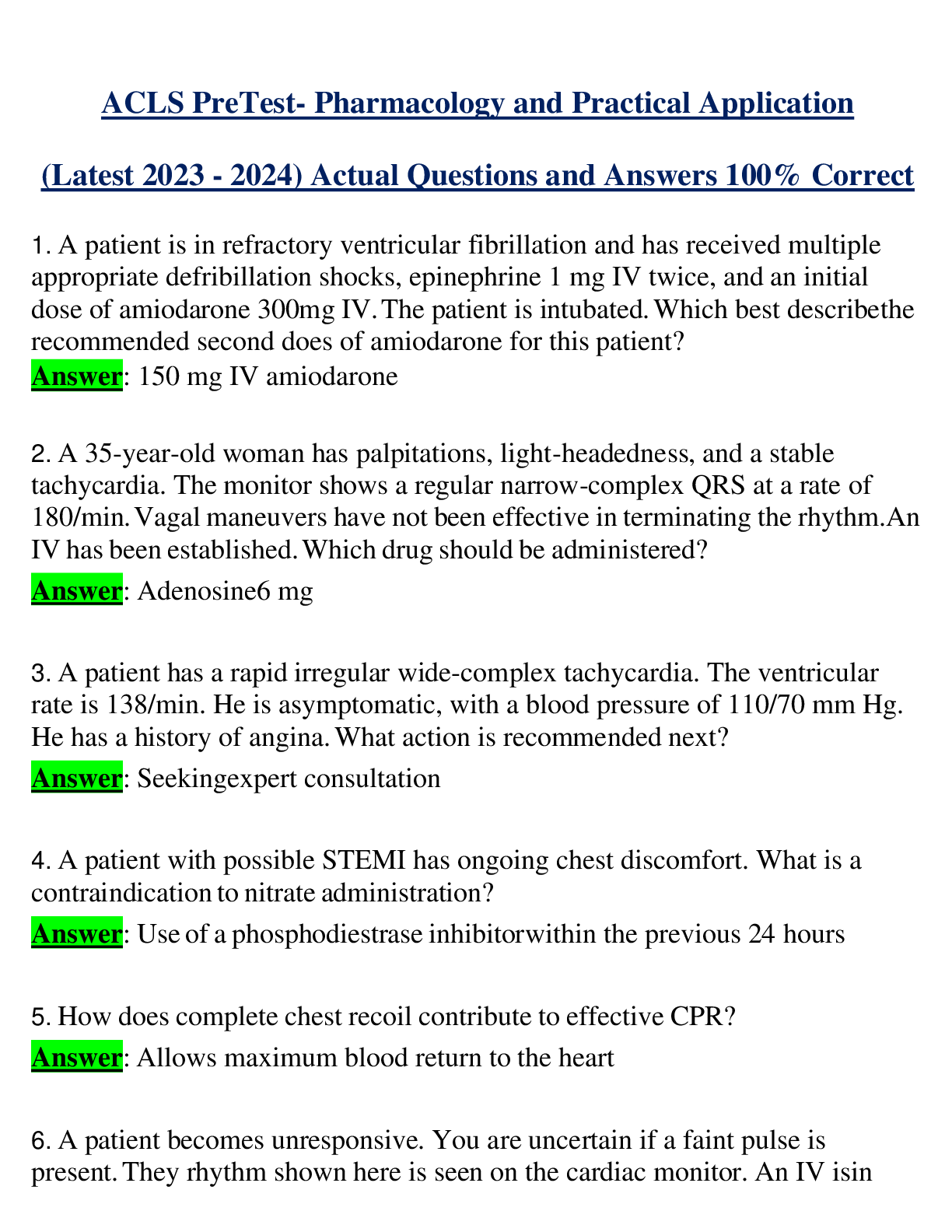ACLS PreTest: Pharmacology and Practical Application (2022) all correct
Document Content and Description Below
ACLS Pretest: Pharmacology and Practical Application_ 2022. You are caring for a 66-year-old man with a history of a large intracerebral hemorrhage 2 months ago. He is being evaluated for another acut... e stroke. The CT scan is negative for hemorrhage. The patient is receiving oxygen via nasal cannula at 2 L/min, and an IV has been established. His blood pressure is 180/100 mm Hg. Which drug do you anticipate giving to this patient? Aspirin Glucose (D50) Nicardipiner tPA In which situation does bradycardia require treatment? 12-lead ECG showing a normal sinus rhythm Hypotension Diastolic blood pressure greater than 90 mm Hg Systolic blood pressure greater than 100 mm Hg Which intervention is most appropriate for the treatment of a patient in asystole? Atropine Defibrillation Epinephrine Transcutaneous pacing A patient with STEMI has ongoing chest discomfort. Heparin 4000 units IV bolus and a heparin infusion of 1000 units per hour are being administered. The patient did not take aspirin because he has a history of gastritis, which was treated 5 years ago. What is your next action? Give aspirin 160 to 325 mg to chew Give clopidogrel 300 mg orally Give enteric-coated aspirin 75 mg orally Give enteric-coated aspirin 325 mg rectally A patient is in refractory ventricular fibrillation. High-quality CPR is in progress. One dose of epinephrine was given after the second shock. An antiarrhythmic drug was given immediately after the third shock. You are the team leader. Which medication do you order next? Epinephrine 1 mg Epinephrine 3 mg Sodium bicarbonate 50 mEq A second dose of the antiarrhythmic drug A patient with sinus bradycardia and a heart rate of 42/min has diaphoresis and a blood pressure of 80/60 mm Hg. What is the initial dose of atropine? 0.1 mg 0.5 mg 1 mg 3 mg A monitored patient in the ICU developed a sudden onset of narrow-complex tachycardia at a rate of 220/min. The patient's blood pressure is 128/58 mm Hg, the PETCO2 is 38 mm Hg, and the pulse oximetry reading is 98%. There is vascular access in the left arm, and the patient has not been given any vasoactive drugs. A 12-lead ECG confirms a supraventricular tachycardia with no evidence of ischemia or infarction. The heart rate has not responded to vagal maneuvers. What is your next action? Administer adenosine 6 mg IV push Administer amiodarone 300 mg IV push Perform synchronized cardioversion at 50 J Perform synchronized cardioversion at 200 J You arrive on the scene with the code team. High-quality CPR is in progress. An AED has previously advised [Show More]
Last updated: 1 year ago
Preview 1 out of 7 pages
Reviews( 0 )
Document information
Connected school, study & course
About the document
Uploaded On
Jun 15, 2022
Number of pages
7
Written in
Additional information
This document has been written for:
Uploaded
Jun 15, 2022
Downloads
0
Views
89





.png)


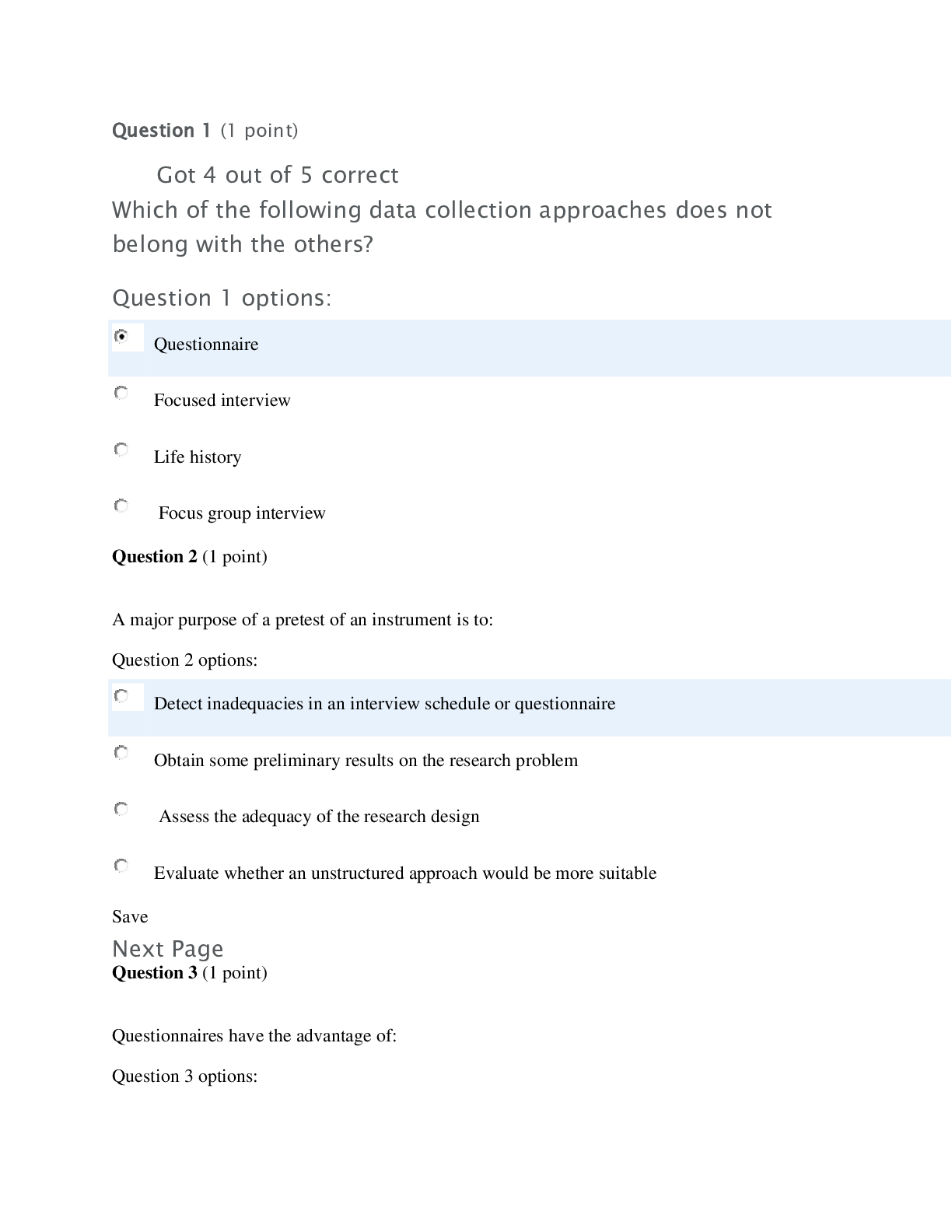


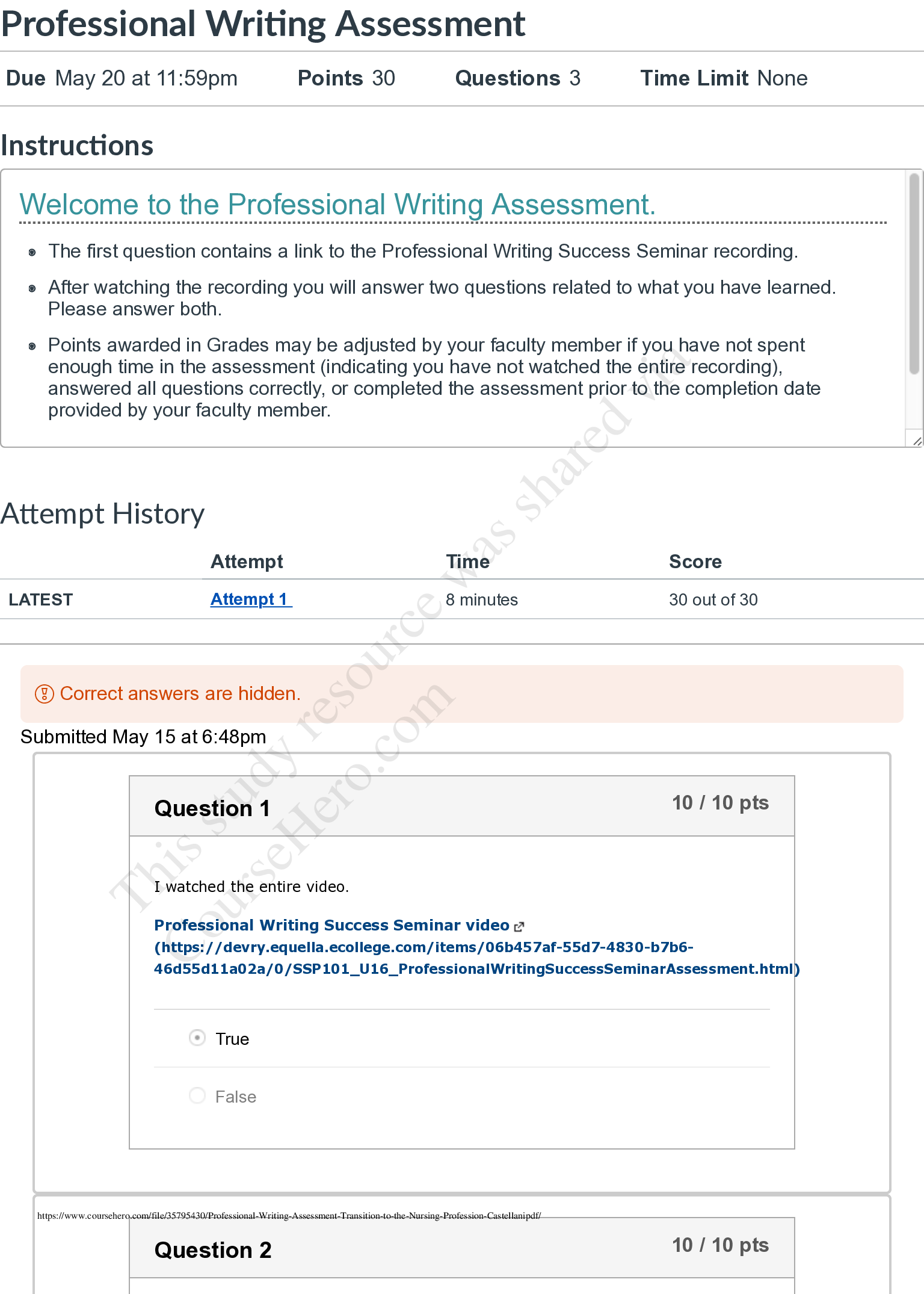
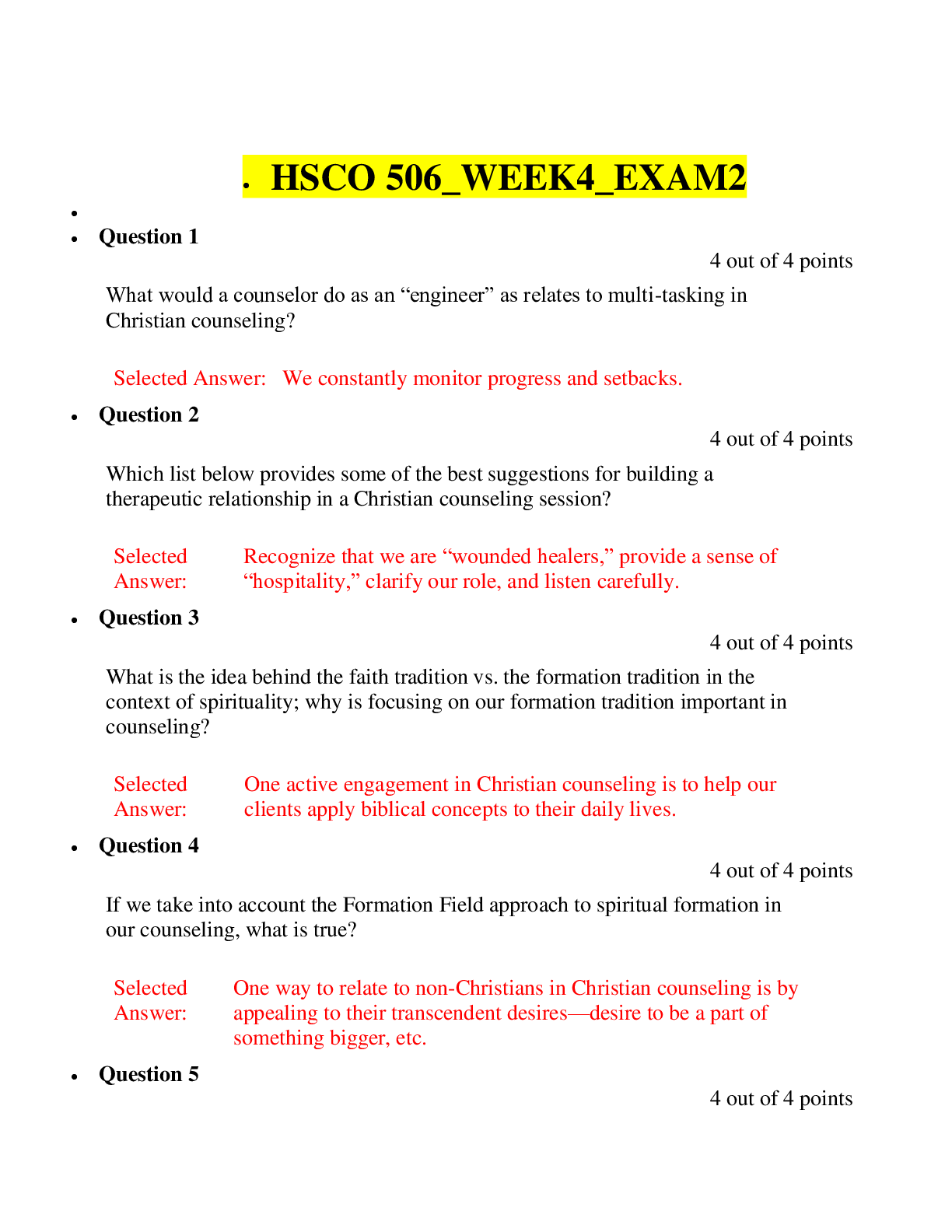
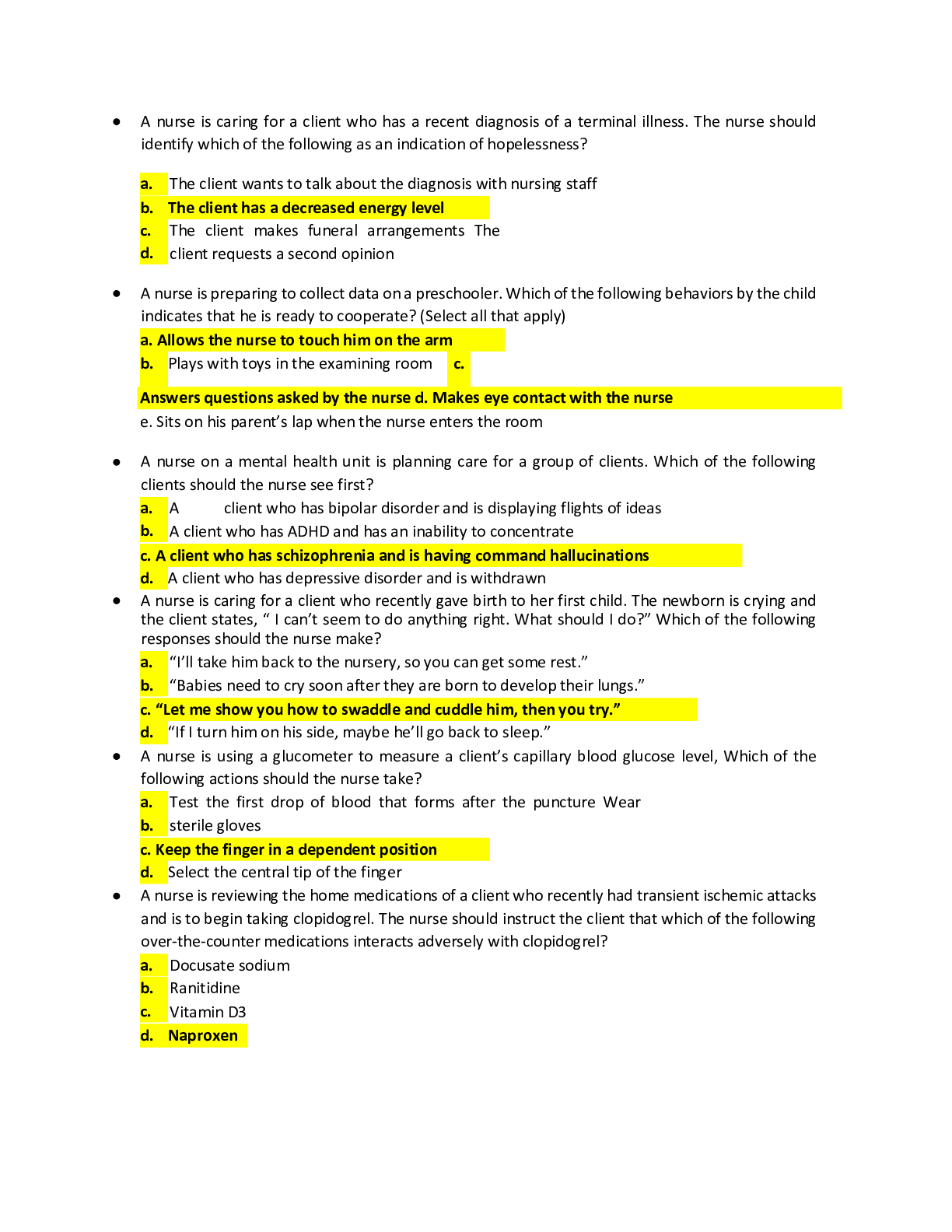

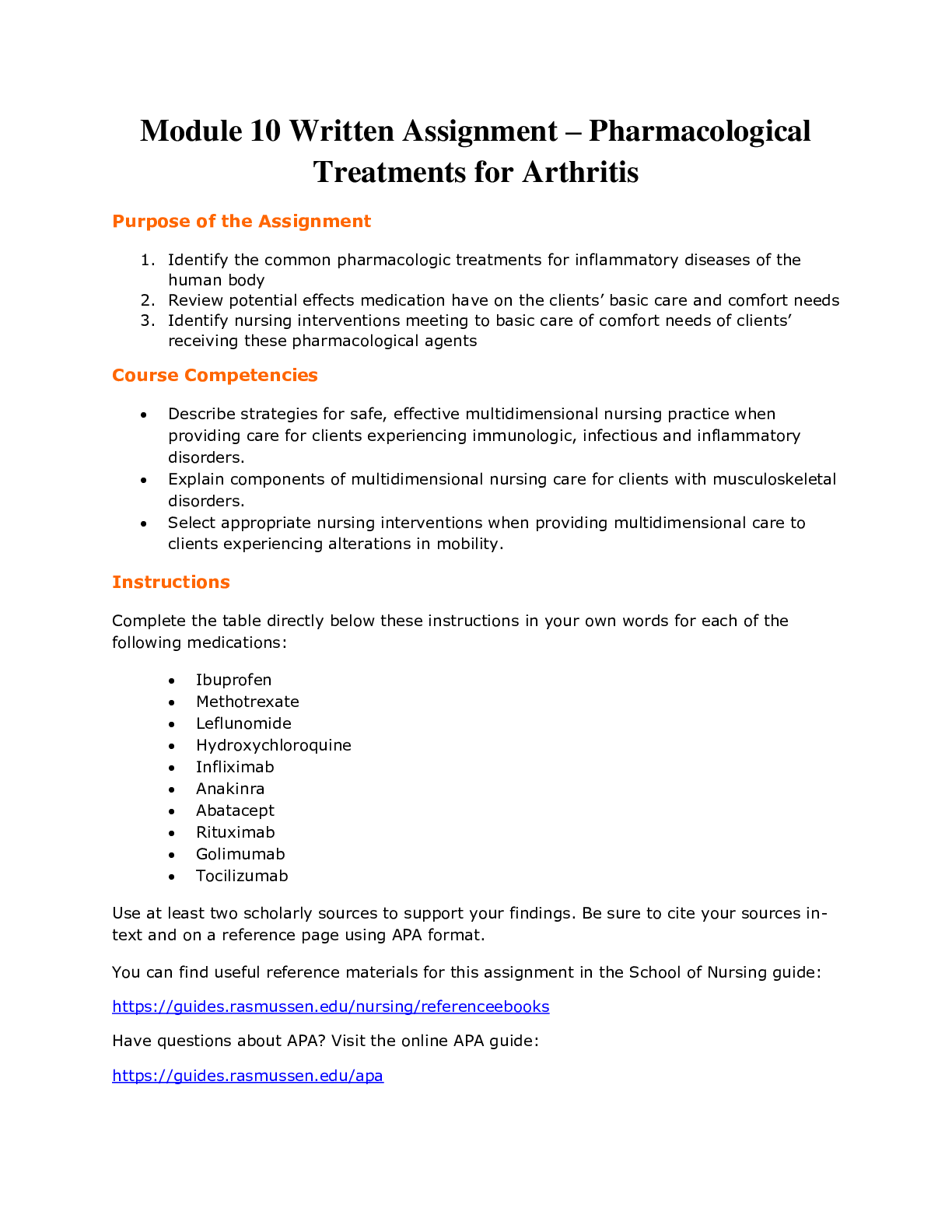
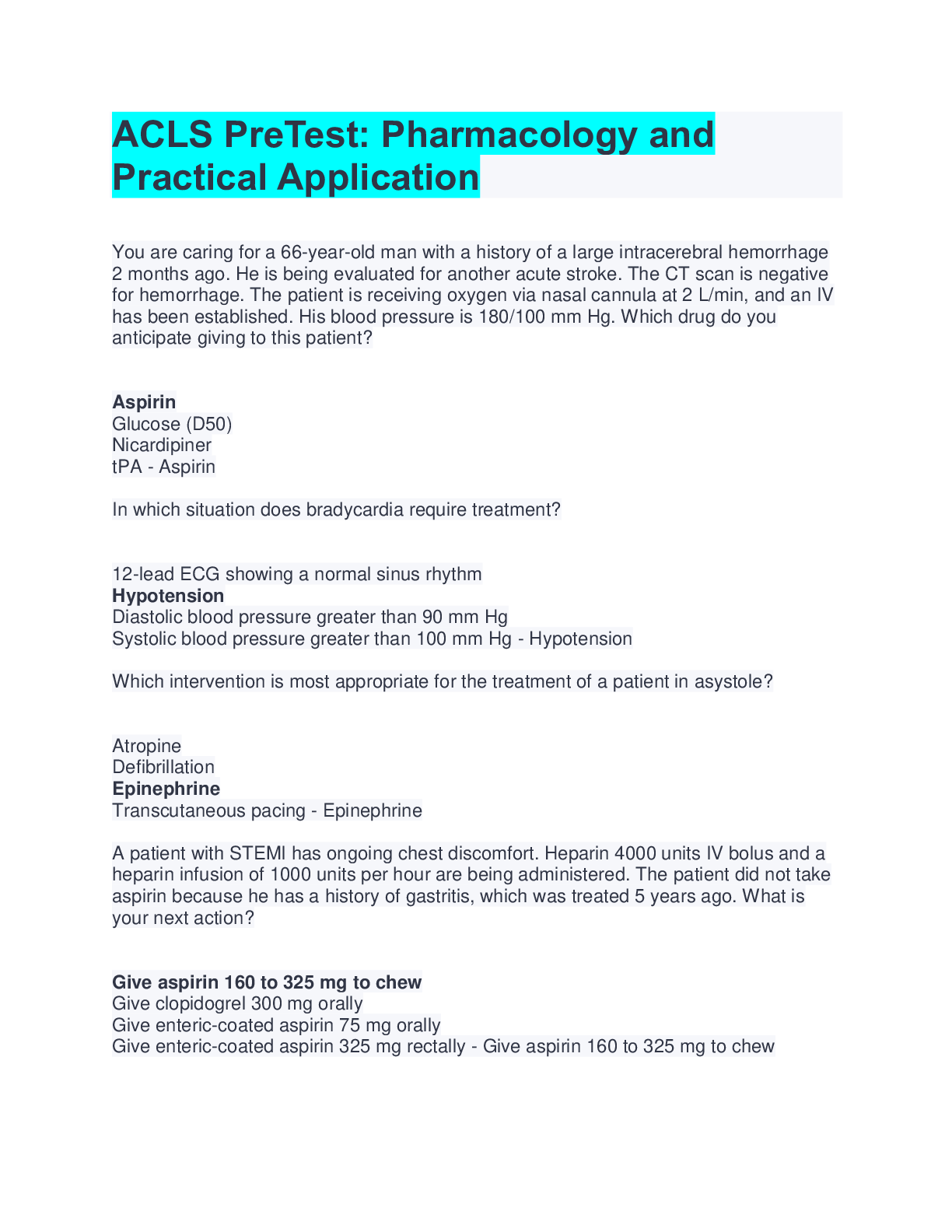


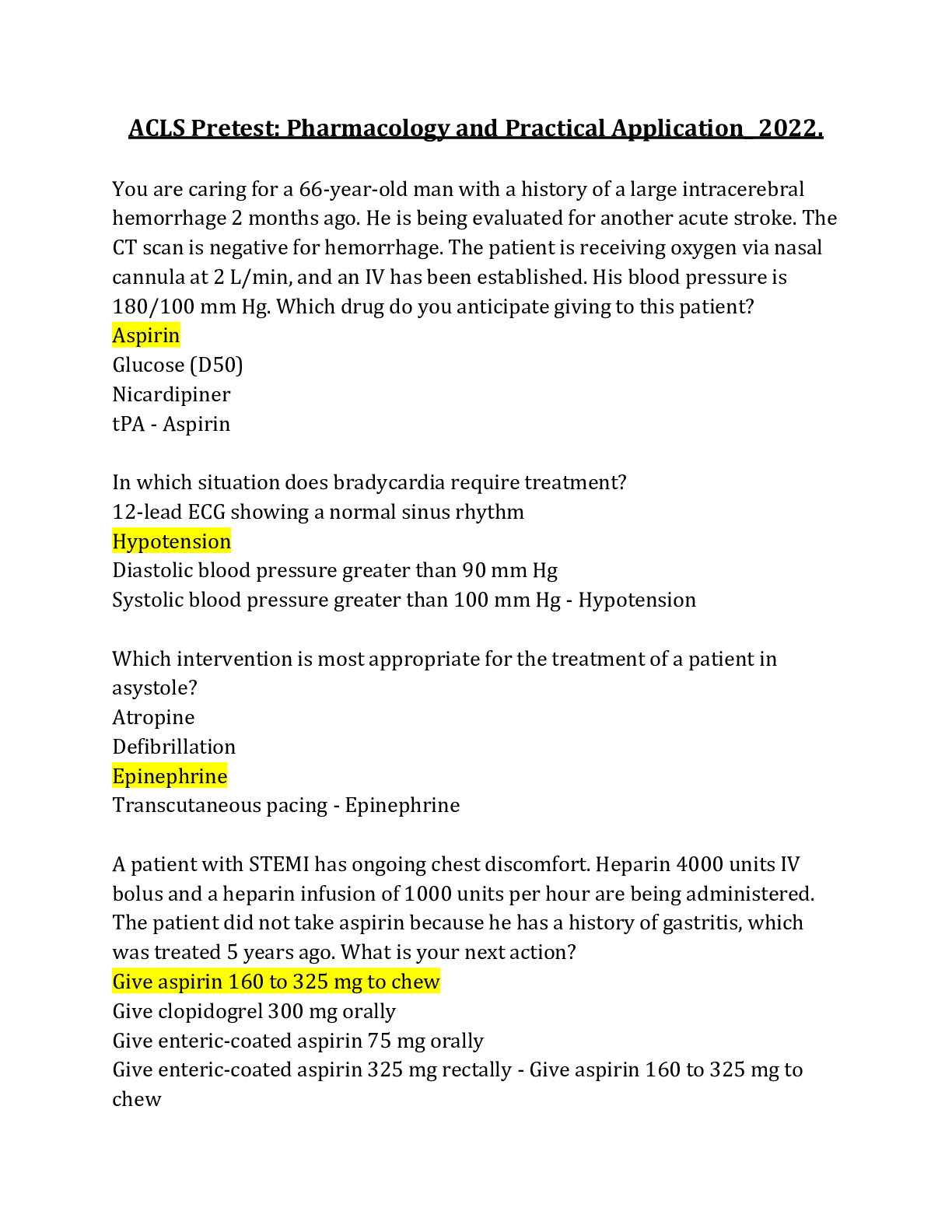
.png)
